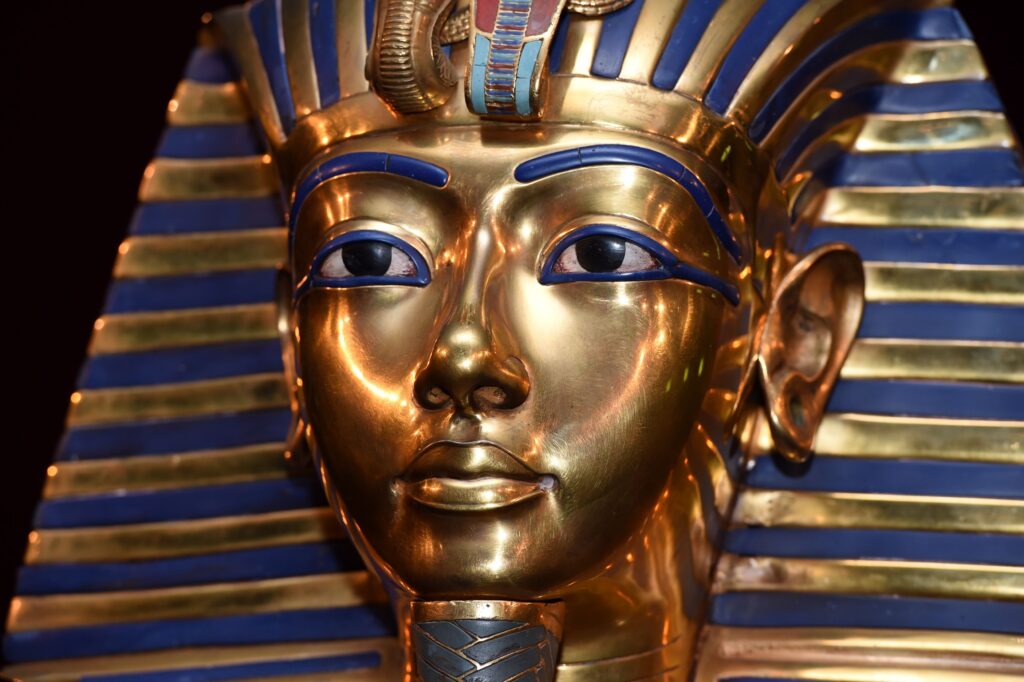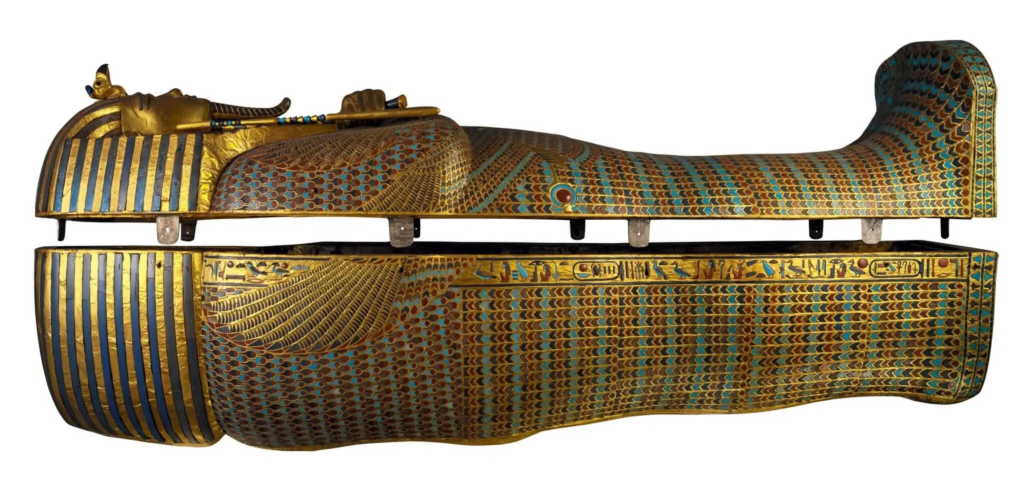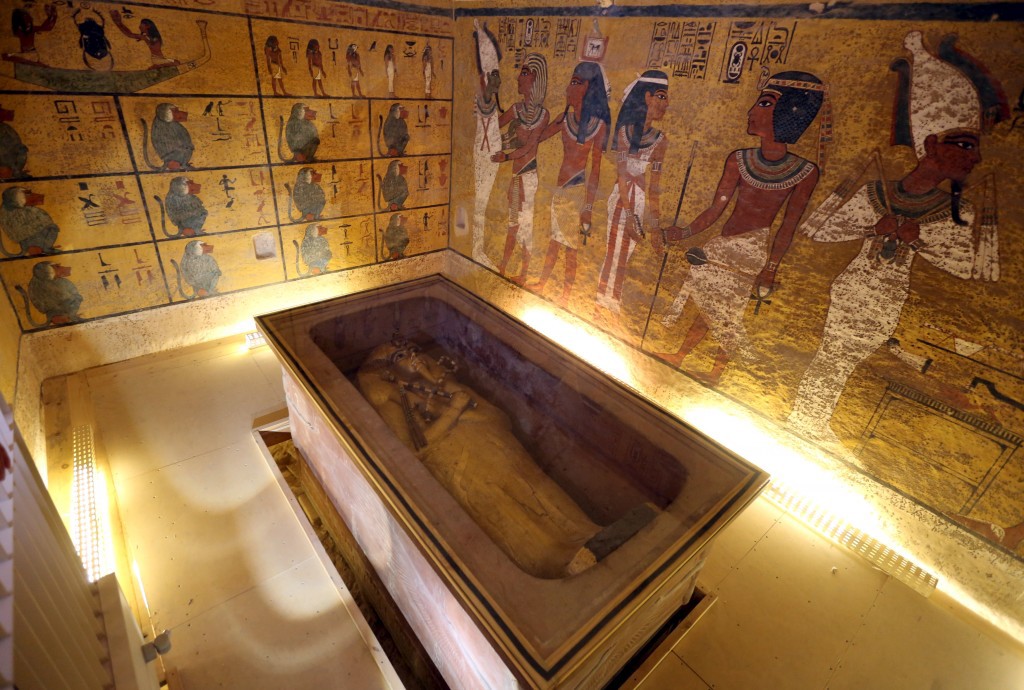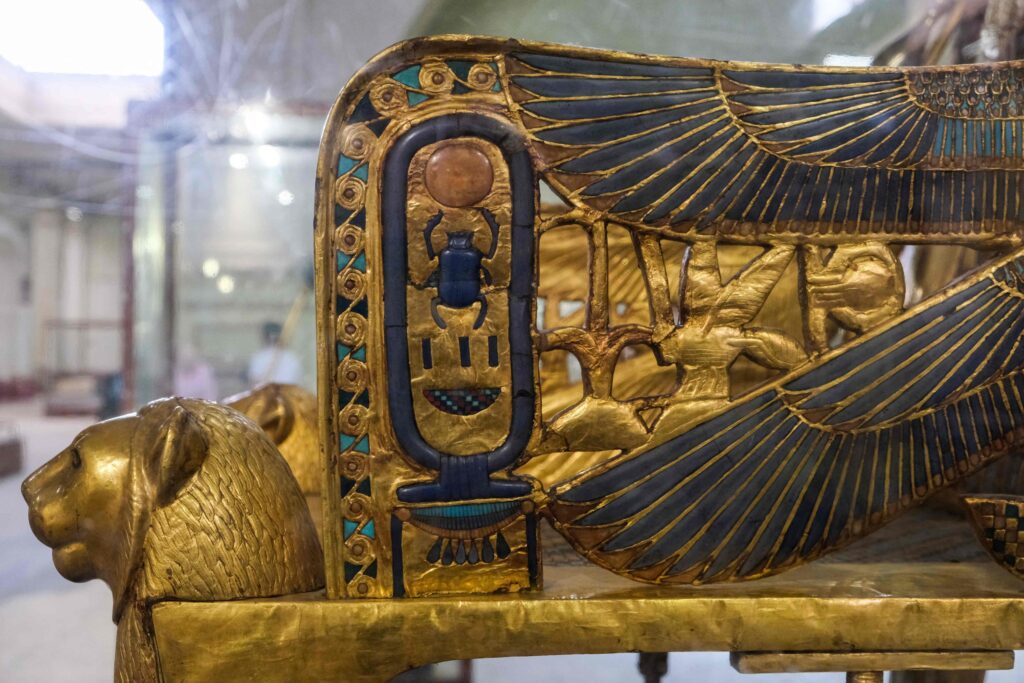Tutankhamun or Tutankhamen, was an ancient Egyptian pharaoh who ruled c. 1332 – 1323 BC during the late Eighteenth Dynasty of ancient Egypt. Born Tutankhaten, he was likely a son of Akhenaten,
Tutankhamun acceded to the throne around the age of nine following the short reigns of his predecessors Smenkhkare and Neferneferuaten. He married his half-sister Ankhesenpaaten, who was probably the mother of his two infant daughters. During his reign he restored the traditional polytheistic form of ancient Egyptian religion, undoing the religious shift known as Atenism. His endowments and restorations of cults were recorded on the Restoration Stela. The cult of the god Amun at Thebes was restored to prominence and the royal couple changed their names to “Tutankhamun” and “Ankhesenamun”, replacing the -aten suffix. Additionally, he moved the royal court away from Akhenaten’s capital, Amarna, and back to Memphis. He reestablished diplomatic relations with the Mitanni and carried out military campaigns in Nubia and the Near East. Tutankhamun was one of few kings worshipped as a deity during his lifetime. The young king likely began construction of a royal tomb in the Valley of the Kings and an accompanying mortuary temple but both were unfinished at the time of his death.






